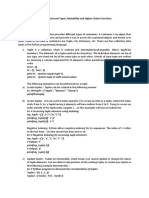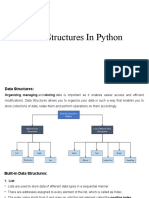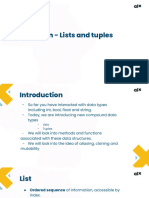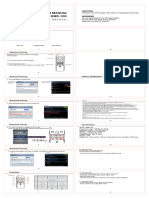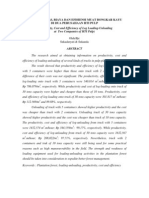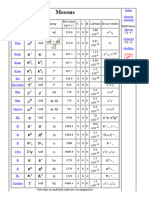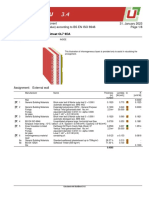0% found this document useful (0 votes)
9 views25 pagesLec 2 .PDF Python
The document is a lecture on data structures, detailing lists, tuples, and dictionaries in Python. It covers their definitions, functionalities, and differences, including methods for accessing, modifying, adding, removing, and copying items. Additionally, it includes assignments for practical application of the concepts discussed.
Uploaded by
ojana3622Copyright
© © All Rights Reserved
We take content rights seriously. If you suspect this is your content, claim it here.
Available Formats
Download as PDF, TXT or read online on Scribd
0% found this document useful (0 votes)
9 views25 pagesLec 2 .PDF Python
The document is a lecture on data structures, detailing lists, tuples, and dictionaries in Python. It covers their definitions, functionalities, and differences, including methods for accessing, modifying, adding, removing, and copying items. Additionally, it includes assignments for practical application of the concepts discussed.
Uploaded by
ojana3622Copyright
© © All Rights Reserved
We take content rights seriously. If you suspect this is your content, claim it here.
Available Formats
Download as PDF, TXT or read online on Scribd
/ 25





